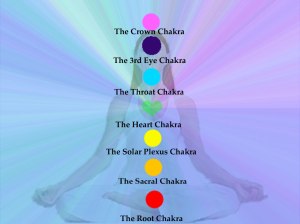This is Chapter 9 of the Kornfield book.
The sections in this chapter are:
(1) Atitudes Toward Altered States–Certain spiritual paths insist that we need to attain profoundly altered states of consciousness in order to discovery a “transcendent” vision of life, to open beyond our body and mind and realize the divine taste of liberation. [Other schools]’s teachings say that liberation and transcendence must be discovered here and now, for if not here in the present, where else can it be found? Instead of seeking to transcend, the perspective of the “immanent” school teaches reality, enlightenment, or the divine must shine through every moment or it is not genuine. (p. 120)
(2) Some Common Altered States–When we begin a spiritual practice, we struggle with the pains of our body and the armoring we have forged for it over the years, we face emotional storms, and we encounter a procession of five common hinderances. But as we continue spiritual practice, and become more familiar and compassionate with our deepest difficulties, even the most ingrained pattens of holding and fear will gradually lose their power over us. We develop a spirit of calm and steadiness, whatever our means of practice. (p. 122)
(a) Raptures–rapture is a broad term used to cover the many kinds of chills, movements, lights, floating, vibrations, delight, and more that open with deep concentration, as well as the enormous pleasure they can bring to meditation. (p. 122)…Deep concentration can lead to all kinds of visions and visionary experiences. Floods of memories, images of past lives, scenes of foreign lands, pictures of heavens and hells, the energies of all the great archetypes, can open before our eyes. (p. 125)…(this has happened to me: “…we can experience a release of the strongest kinds of emotions, from sorrow and despair to delight and ecstasy. Meditation may feel like an emotional roller coaster as we allow ourselves to be plunged into unconscious emotions.” p. 126)
(b) Chakras–This section describes the chakras and the openings of the energy body and the experience as our inner energy tries to move and free itself in the body
(3) Skillful Means of Working with the Energetic and Emotional Openings–we need a teacher who has personally encountered and understood these dimensions of the psyche
(a) All Experiences are Side Effects–In the Buddhist tradition, the Buddha often reminded students that the purpose of his teaching was not the accumulation of special good deeds and good karma or rapture or insight or bliss, but only the sure heart’s release–a true liberation of our being in every realm. This freedom and awakening, and this alone, is the purpose of any genuine spiritual path. (p. 129)
(b) Finding the Brake—very cool and interesting section! The most important thing, however, is: it is necessary to find a guide, someone who has touched their own madness, grief, and loss of boundaries, who can gradually and fearlessly direct us back to the ground of our own true nature. (p. 132)
(c) Awareness of the Dance–the practitioner’s primary responsibility is to open to the experience with a full awareness, observing and sensing it as a part of the dance of our human life. (p. 133)
(4) Meditation: Reflecting on Your Attitude Toward Altered States
